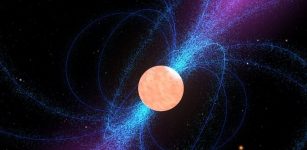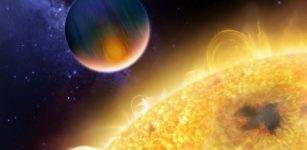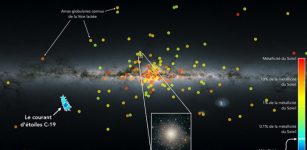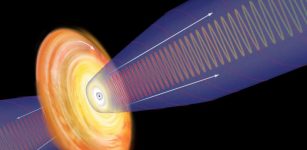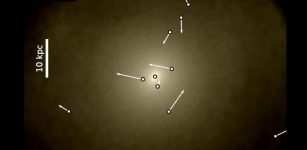AI Helps Scientists Better Understand Phenomenon Of Dark Energy
Eddie Gonzales Jr. – MessageToEagle.com – A research team led by UCL has utilized artificial intelligence (AI) to more accurately determine the characteristics and impact of dark energy.
A matter map derived from one of the simulated universes. The lightest areas of the map show the regions where dark matter is most dense. These correspond to superclusters of galaxies. The dark, almost black patches are cosmic voids, the large empty spaces in between clusters of galaxies. Credit: Niall Jeffrey et al
They’ve done this by analyzing a map that showcases both dark and visible matter in the Universe, spanning over the last seven billion years.
In a press release, Dr. Niall Jeffrey from UCL Physics & Astronomy stated in a press release: “We’ve effectively doubled the accuracy of our estimates regarding crucial aspects of the universe by utilizing AI to learn from computer-generated universes.”
“To achieve this improvement without these novel techniques, we would need four times the amount of data. This would be equivalent to mapping another 300 million galaxies.”
The research conducted by the Dark Energy Survey collaboration has significantly enhanced the accuracy with which crucial attributes of the Universe, such as the overall density of dark energy, can be deduced from the map. This heightened precision empowers researchers to dismiss previously plausible models of the Universe.
Dark energy, an enigmatic force, is believed to be responsible for the accelerating expansion of the Universe. It is estimated to constitute approximately 70% of the Universe’s content. Dark matter, an unseen entity whose gravitational influence binds galaxies together, accounts for another 25%, leaving a mere 5% composed of ordinary matter.
“Our findings are in line with the current best prediction of dark energy as a ‘cosmological constant’ whose value does not vary in space or time. However, they also allow flexibility for a different explanation to be correct. For instance, it still could be that our theory of gravity is wrong,” according to co-author Dr Lorne Whiteway (UCL Physics & Astronomy).
In line with previous analyses of the Dark Energy Survey map, first published in 2021, the findings suggest that matter in the universe is more smoothly spread – ”less lumpy” – than Einstein’s theory of general relativity would predict. However, the discrepancy was less significant for this study compared to the earlier analysis, as the error bars were larger.
The map of the Dark Energy Survey was obtained via a technique known as weak gravitational lensing, which involves observing how light from far-off galaxies has been distorted by the gravitational pull of matter it encountered en route to Earth.
The team analyzed distortions in the configurations of 100 million galaxies to deduce the distribution of all matter, both dark and visible, that lies before these galaxies.
The obtained map encompasses a quarter of the sky located in the Southern Hemisphere.
Written by Eddie Gonzales Jr. – MessageToEagle.com Staff Writer







